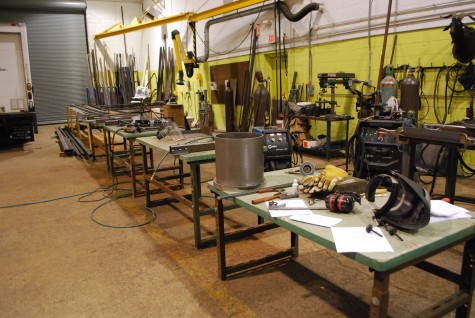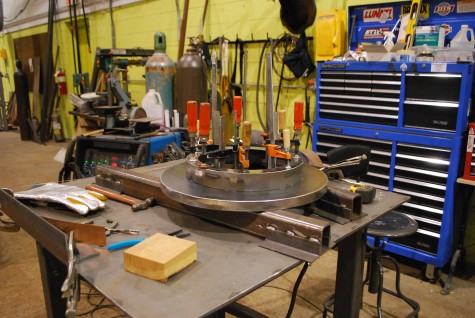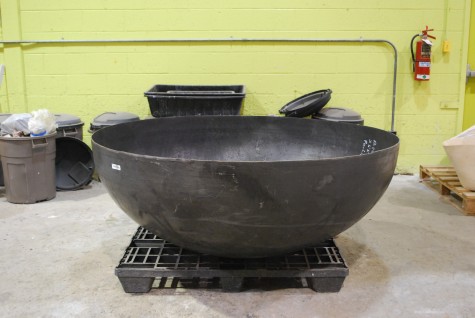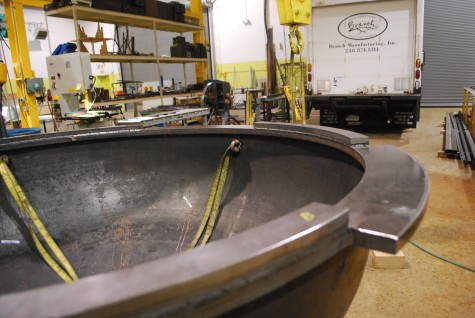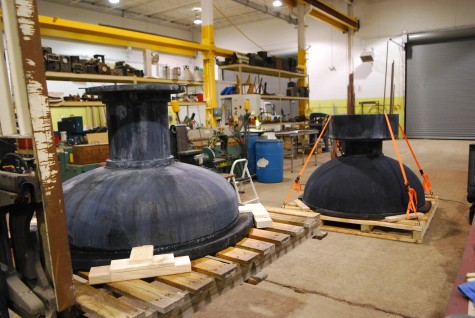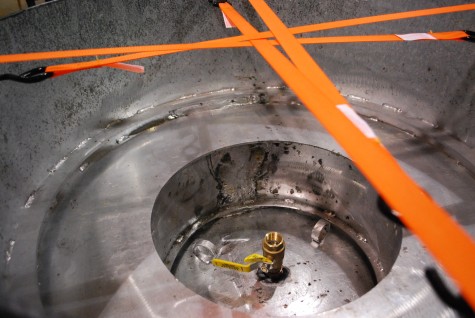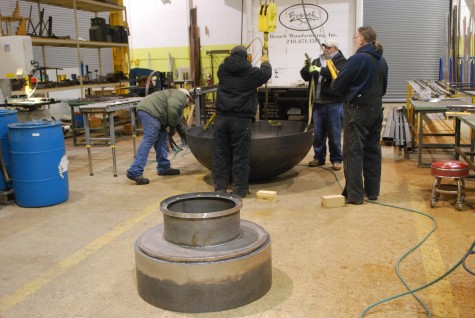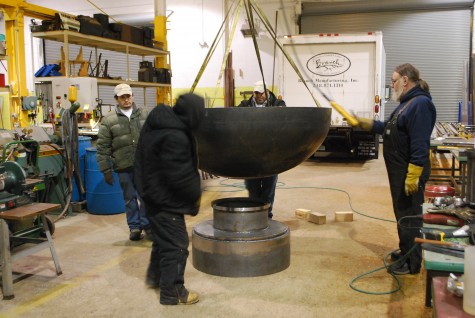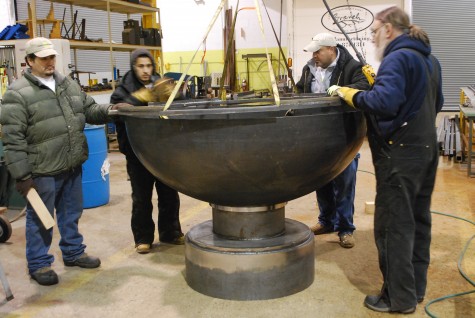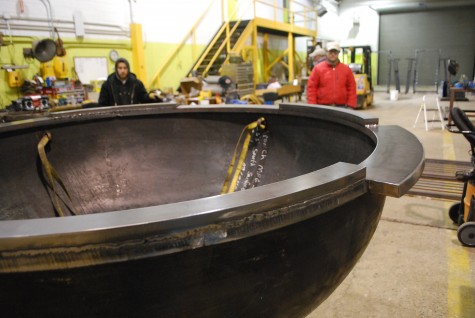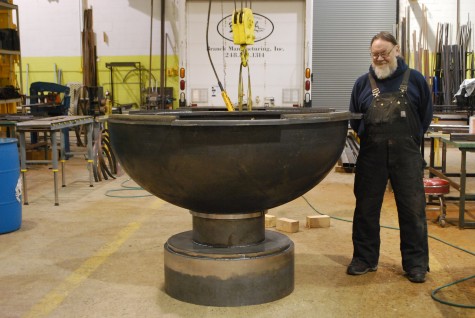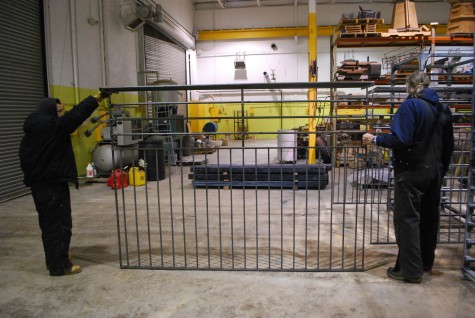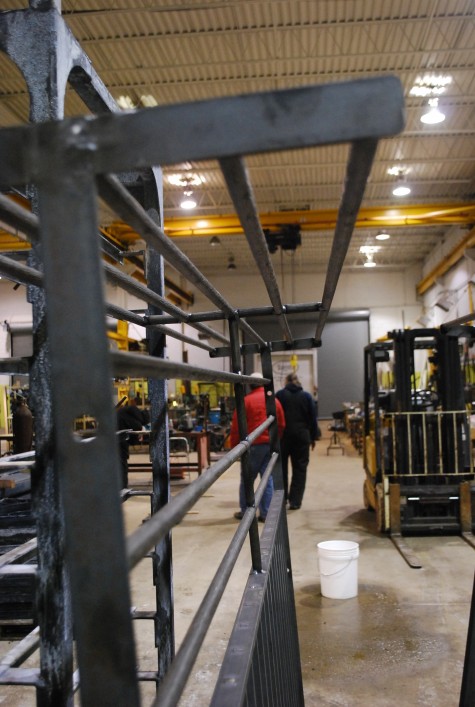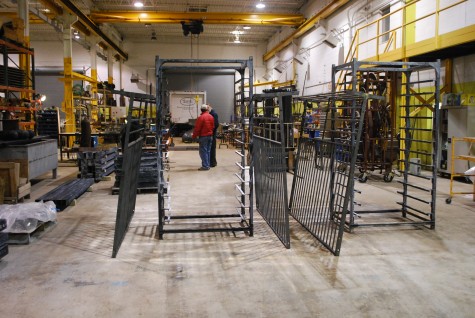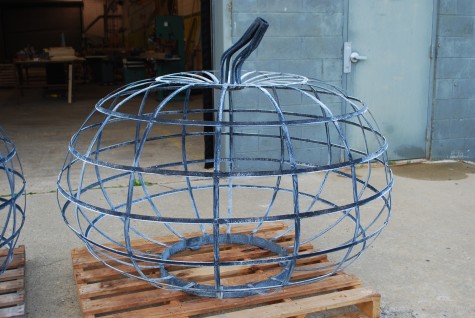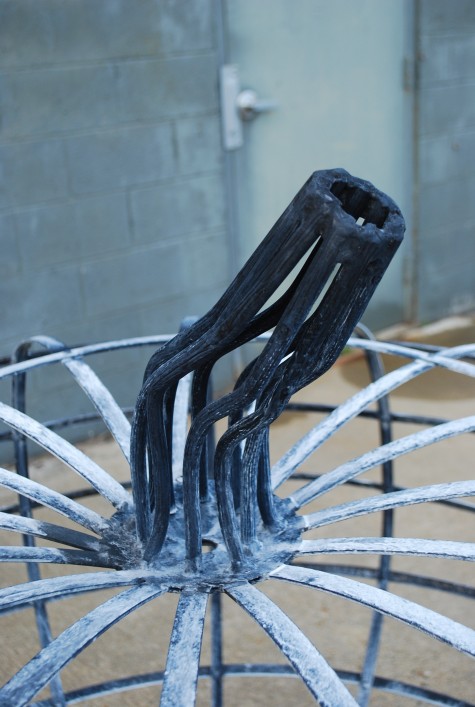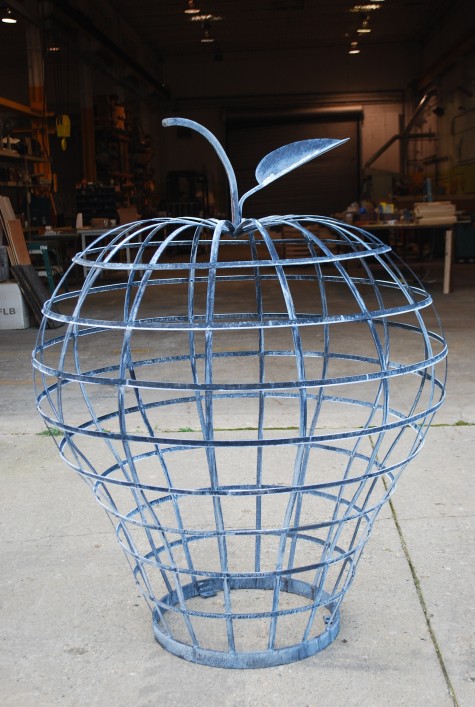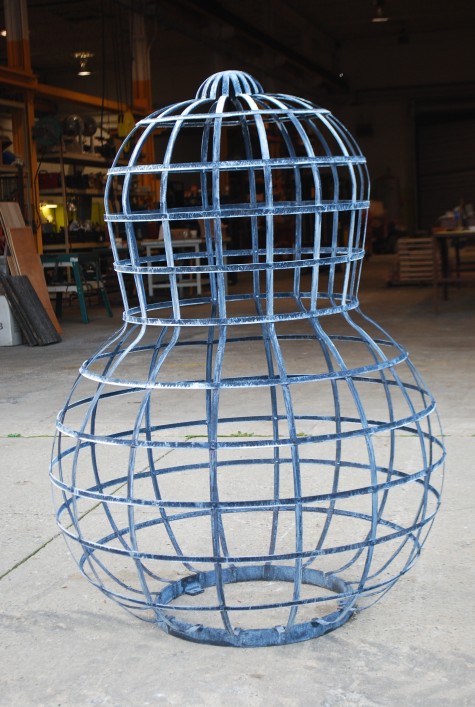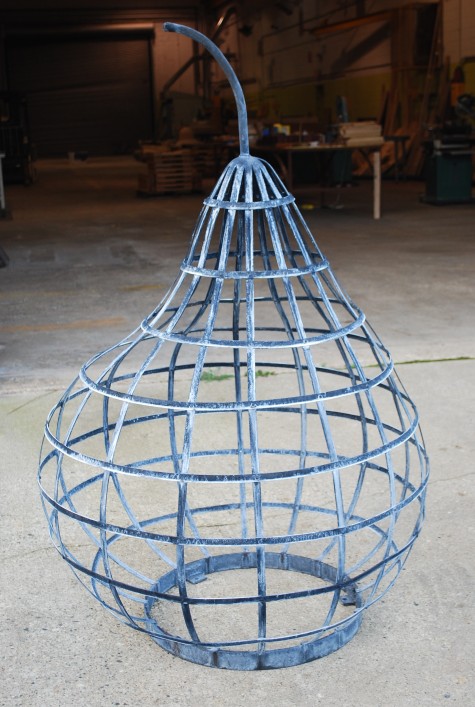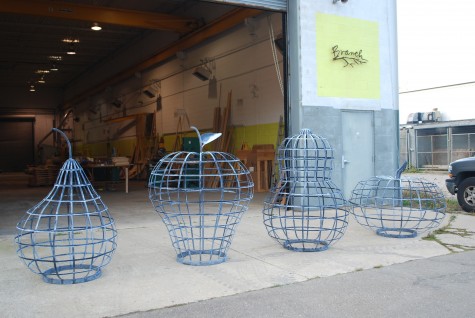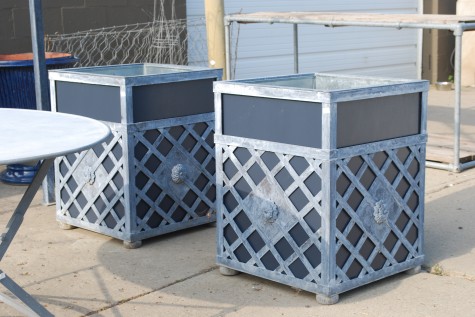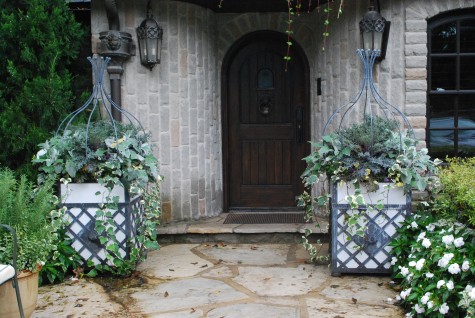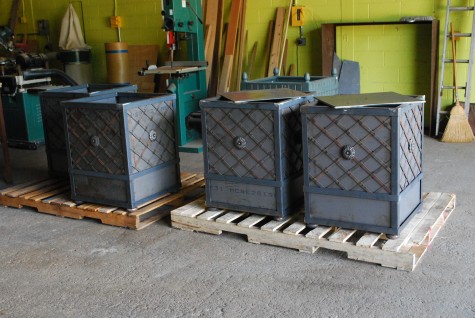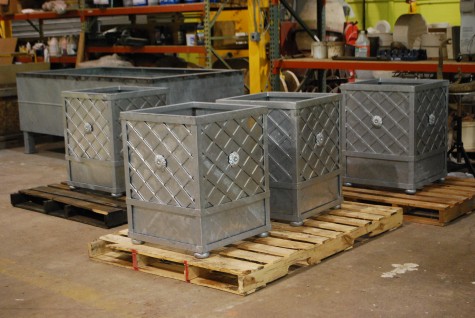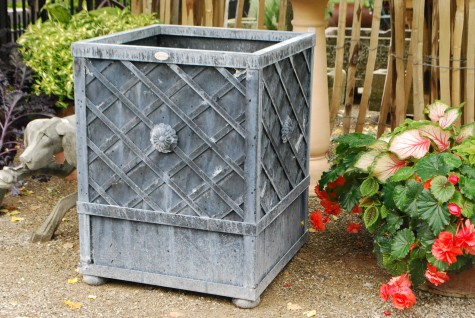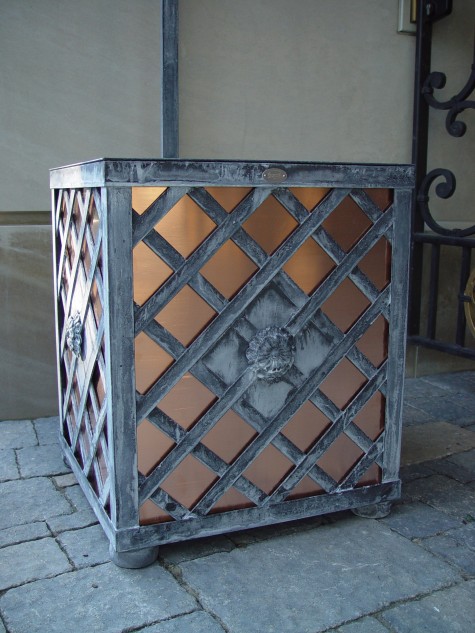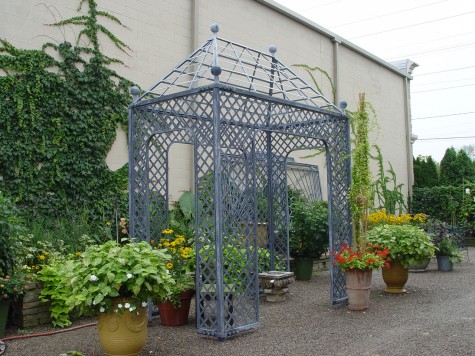The welding studio has been busy the last 3 weeks. Buck had a special order for a fountain, and a matching urn for a client in California, and a destination in Fort Worth Texas. The sheer size of the fountain meant the base and scuppers needed to be very strong, and the steel thick and heavy.
The project under construction has a landscape architect on retainer. He designed both pieces, and we fabricated from his designs. The drawing from the LA needed to be drawn in CAD-this is short for computer assisted design. It is an enormous skill in and of itself to master the CAD program. Buck is an expert, given his 30 year experience as an architect specializing in technical design. That CAD drawing enables him to fabricate an object true to every dimension specified in the design.
The hemispherical fountain bowl is 60 inches in diameter. Creating this shape from a solid piece of steel involves a lot of technology, a surprising amount of finesse, and loads of skill. This bowl is not perfectly hemsipherical, but it is extremely close. Close enough to convince the eye.
Once the bowl had a 2 inch thick lip of steel, interrupted by 4 evenly spaced scuppers, it was ready to be welded to the base. Scuppers? The steel lip keeps the water inside the bowl. The scupper is that place where the steel dam had been breached, allowing water to flow and fall over the edge. Once the steel is galvanized, Buck applies our finish. He finished the inside of the bowl, and the base first. Then the entire fountain, with the aid of a bridge crane, would be flipped up side down for the finishing of the bowl.
The fountain design is very simple, but massive. The finished piece weighs close to 1/2 a ton. It will be placed in a large pool-I am not sure of any of the installation details. It will take some skill to size the pump properly, so the water sheets over the side without runing back under the scupper, and down the side of the bowl. Fountain design, fabrication and installation takes a lot of skill.
The urn, on the forklift in the foreground, is much smaller than the fountain, and will be placed in some other location on the project. This piece will be planted. Both pieces were shipped up side down, for obvious reasons. All of the weight of the steel is at the top.
The fountain does not have a jet. The pump will push water hard enough to keep the water flowing fast over the 4 scuppers and into the pool. The contractor for the project wanted this copper pipe and stop valve installed just as you see here.
Buck did not crate this piece-what crate would be stronger than this steel? Circular shapes are very stable and incredibly strong-even more so when they are made of steel. I have heard I will get pictures of the installation once it is finished and running. I have my fingers crossed about that. Buck tells me the level of the base and the level of the top of the fountain is within a 1/16 of an inch of being dead on. Dead on and level is very important where water is concerned. In a perfect world, water will fall over all 4 sides equally. In an imperfect world, within 1/16 of an inch of perfect will work. Buck and his crew make lots of things that are a part of something bigger. If no pictures are forthcoming, I have some help. Buck has family in Fort Worth. What fun, that they will get to see something he made, available for the looking, just across town.
